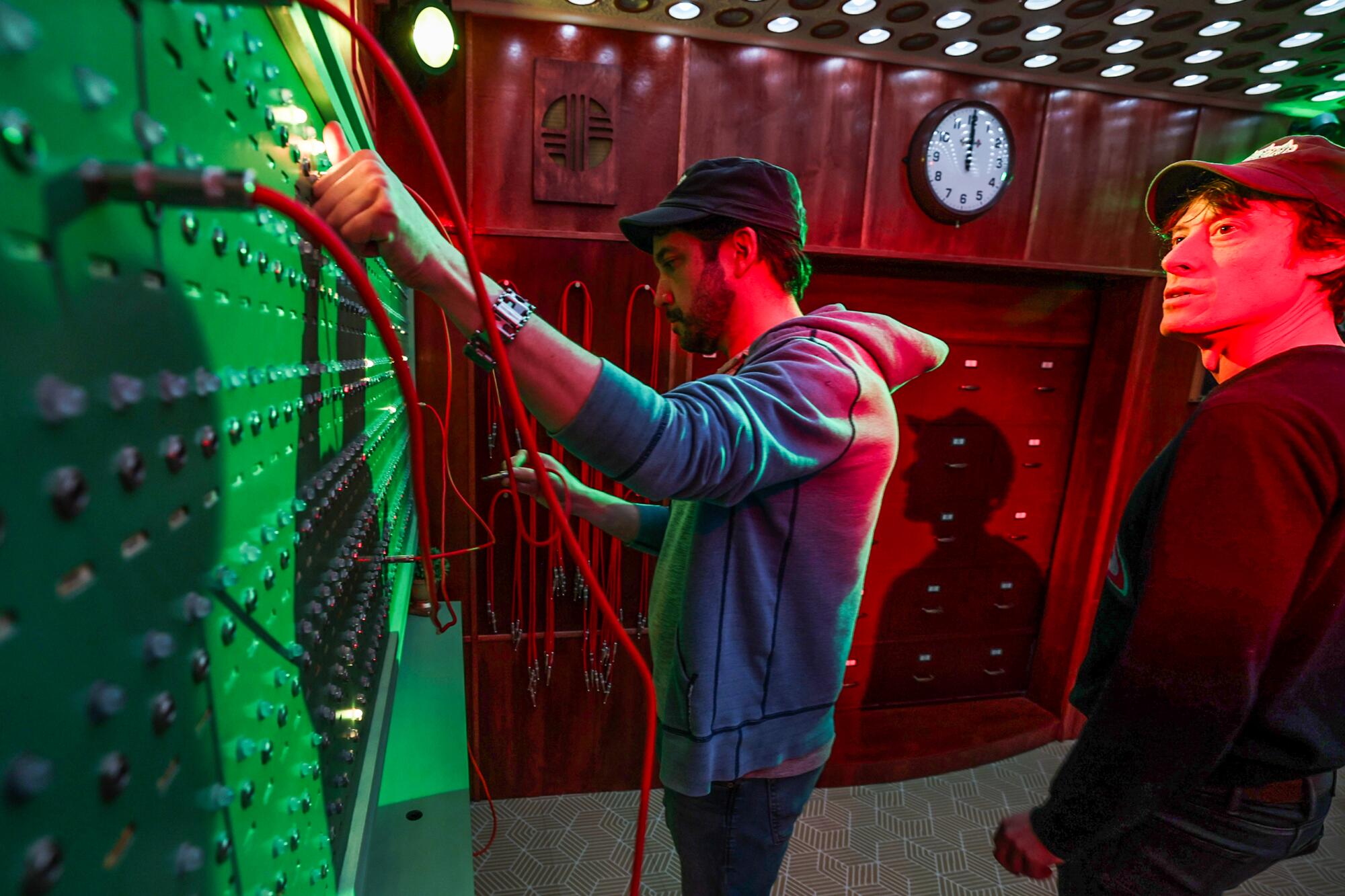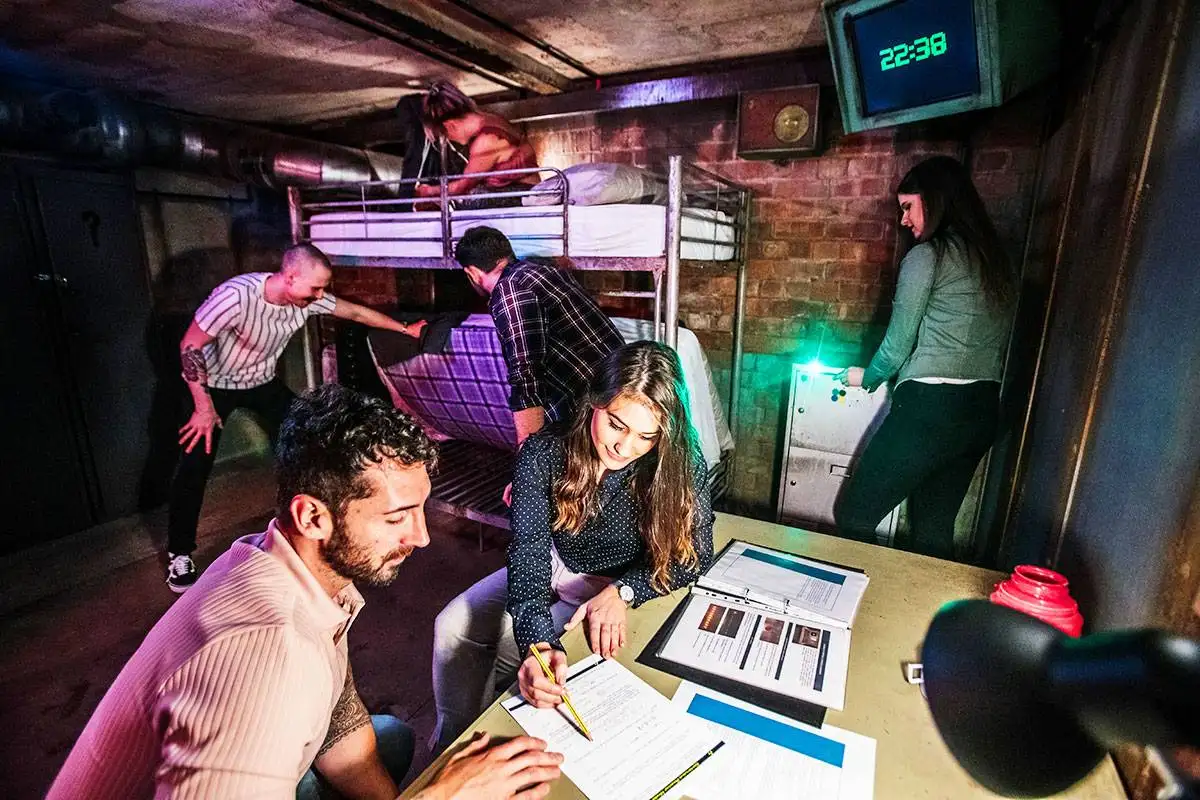Dive Into a Globe of Journey and Problem-Solving in Escape Rooms
Escape rooms have surged in popularity, offering an unique blend of adventure and cognitive difficulty that captivates participants of all ages. These interactive experiences submerse gamers in themed atmospheres where teamwork and important reasoning are vital to success. From unraveling detailed historic mysteries to navigating spooky, spine-chilling circumstances, each area provides an unique story that evaluates your analytic acumen. Whether you're an interested newcomer or a seasoned lover, the allure of these immersive challenges beckons. What precisely gas this attraction, and exactly how can one optimize their experience? The responses might shock you.
The Rise of Escape Rooms
Escape rooms have seen a significant surge in popularity over the previous years, changing from particular niche enjoyment to a mainstream sensation. Coming from Japan around 2007, these interactive challenge games quickly astounded target markets worldwide. The immersive experience of being "locked" in an area and functioning collaboratively to address puzzles within an established duration uses an one-of-a-kind mix of thrill and cognitive challenge.
The rise of escape spaces can be associated to several elements. They cater to a large market, from households looking for an enjoyable outing to company teams interested in team-building workouts. Secondly, the interactive nature of retreat rooms uses a tangible comparison to the online escapism common in digital video gaming. Participants are literally present, engaging in real-world analytic, which adds a component of credibility and exhilaration.
Additionally, the social aspect can not be forgotten. Escape areas foster collaboration and interaction, urging participants to pool their skills and understanding. This joint initiative not just enhances the experience yet also builds sociability among players. Additionally, the consistent development of puzzle layout and technical integration makes sure that escape areas continue to be challenging and fresh, adding to their sustained appeal.
Types of Escape Room Styles

One prevalent style is the "Mystery and Investigative" category, where individuals represent detectives tasked with addressing a criminal activity or discovering a concealed truth. These rooms frequently include detailed problems and narrative-driven obstacles that require eager observation and rational reasoning.
One more prominent theme is "Historical and Adventure". Below, gamers might discover themselves in old Egypt, navigating with a pharaoh's tomb, or throughout World Battle II, decoding adversary messages. These styles provide an instructional twist, mixing historic facts with engaging gameplay.
For those looking for an adventure, "Scary and Paranormal" getaway rooms deliver spine-chilling experiences. Set in haunted houses or deserted asylums, these spaces count on climatic effects and emotional scares to increase the stress.
Trick Abilities for Success
Success in retreat spaces hinges on a blend of vital abilities that participants should harness to get rid of the diverse difficulties they will certainly experience. Leading among these is reliable communication. Concise and clear sharing of information makes certain that all staff member recognize discoveries and can build on each various other's understandings. Equally essential is team effort; getaway spaces call for a collective effort, where each participant's toughness are utilized to take on various puzzles and jobs effectively.
Analytical thinking is likewise crucial, permitting teams to explore intricate puzzles and develop sensible links in between disparate components within the area. Time management is a more crucial, as the dealt with period of retreat space experiences requires effective allotment of time to different tasks and challenges.
The ability to pivot methods when preliminary plans fail makes certain that groups can dynamically respond to evolving challenges. Proficiency of these abilities jointly improves the probability of a successful escape.
The Psychology of Problem-Solving
Understanding the psychology of problem-solving is essential for browsing the detailed challenges offered by escape rooms. Problem-solving is a cognitive process click to read more that involves acknowledging a trouble, producing feasible services, reviewing them, and afterwards carrying out the most effective course of activity. Cognitive psychologists have long studied this process, identifying numerous stages such as problem recognition, structuring the problem, and using heuristics or formulas to discover options.
Escape rooms create an environment where participants must rapidly relocate via these cognitive stages under stress. The high-stakes, time-constrained nature of retreat areas can cause a state of enhanced stimulation, which can either enhance or impair cognitive performance relying on the individual's tension response. The Yerkes-Dodson Law suggests that moderate tension levels can optimize analytical capacities, whereas extreme anxiety can be destructive.
In addition, retreat rooms typically need joint analytical, leveraging team characteristics to boost cognitive processes. Comprehending these psychological principles can dramatically improve one's capacity to solve complex puzzles successfully.
Tips for First-Timers
Beginning on your initial retreat room experience can be both complicated and awesome. To improve your experience, it is important to approach it with a method. Firstly, put together a team with diverse abilities. A mix of logical thinkers, innovative minds, and good communicators is excellent. The more differed the ability, the much better outfitted you'll be to tackle various kinds of challenges.
Communication within the group is vital. Share findings and understandings without more info here delay, as one person's exploration can be the missing out on piece another needs. Prevent tunnel vision; if a puzzle seems impossible, pass it on a teammate to gain a fresh point of view.
Time monitoring is likewise vital. Keep an eye on the clock and designate your time wisely. If a certain puzzle is consuming way too much time, it could be sensible to carry on and return to it later.

Conclusion
Escape rooms provide an unique mix of adventure, cognitive challenge, and immersive narration, making them a preferred option for both amusement and ability advancement. By participating in complex challenges and varied themes, participants enhance team effort, interaction, and analytical capabilities. The mental benefits gotten from these experiences prolong beyond the retreat room, promoting enhanced interpersonal abilities and cognitive functions. Welcome the world of retreat rooms to cultivate crucial reasoning and develop enduring, collaborative memories.
The constant development of puzzle layout and technological combination makes sure that escape areas stay challenging and fresh, contributing to their sustained appeal. - escape room in la
Similarly vital is synergy; getaway rooms need a collective effort, where each participant's staminas are made use of to tackle different challenges and jobs efficiently.
Time administration is an additional important, as the repaired period of getaway space experiences demands efficient appropriation of time to different tasks and puzzles.
Recognizing the psychology of analytical is crucial for browsing the elaborate obstacles provided by retreat rooms.Additionally, escape rooms commonly call for collaborative problem-solving, leveraging group dynamics to enhance cognitive processes.